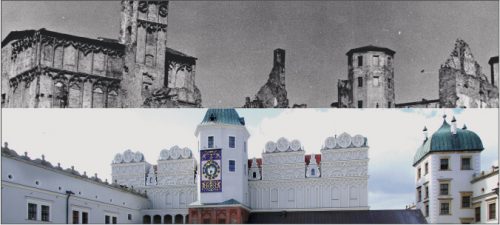 Maintenance issue, Repair, the restoration or reconstruction of architectural divisions is probably so old, like construction technology. From many sources, as well as on the basis of research on the monuments themselves, results, that both in the ancient period, in the Middle Ages, as well as in modern times the need to care for the legacy of the past was felt and understood.
Maintenance issue, Repair, the restoration or reconstruction of architectural divisions is probably so old, like construction technology. From many sources, as well as on the basis of research on the monuments themselves, results, that both in the ancient period, in the Middle Ages, as well as in modern times the need to care for the legacy of the past was felt and understood.
To sustain the existence of decaying or ageing buildings deemed worthy of preservation, various technical measures were carried out.. These treatments, of course, had nothing to do with it., what we currently mean by maintenance. The ideological principles of conservation of monuments were not immediately specified. They were preceded by a broad awareness-raising information activity on the importance of monuments for culture and civilization and a persistent action to prevent the destruction of monuments.
Until the eighteenth century, this issue was taken up sporadically by magnates and privileged layers., as an expression of personal preferences. Following the example of France, at the beginning of the nineteenth century, interest in monuments also begins to develop in other countries. At this time, almost all over Europe’ the positive impact of works of art of past epochs on broad layers of society began to be recognized. There is a lively activity of art historians, Architects, archaeologists and lovers of monuments, which leads to a clarification of the definition of a monument, later modified many times, and as a result, the principles of conservation care are developed.
The starting point in this case was the inventory of the state of possession, In some countries, legal acts are being created prohibiting the destruction of major monuments and regulating the way they are used.. In the nineteenth century, organized technical and conservation works are initiated.
In the Polish lands, also from the second half of the eighteenth century, the cult of architectural monuments on the, background to the general need to spread culture and. Education. Until then, you can also trace the beginnings of the inventory of monuments. More organized forms of care for monuments began to appear only in the first decade of the nineteenth century. Particularly lively activity in this area was undertaken in Małopolska and in its center – Krakow, it was there that the exchange of Polish conservation thought began to concentrate.. Pioneering work in the field of measurement and descriptive inventory of monuments has begun with social means., especially Romanesque and Gothic, scientific archaeological research was initiated, the publication of publications on construction and architecture of the past was initiated. At the end of the nineteenth century, the reconstruction of some previously demolished monuments began and the conservation of more endangered objects began.. Also in the Congress Kingdom, in Wielkopolska and Pomerania, research on native architecture was initiated at that time.. However, they did not achieve major results., despite the attempts of certain groups and individuals, as a result of difficult political conditions.
Throughout the nineteenth century, views crystallize, criteria and rules for the conservation of architectural monuments, In numerous cases, work is undertaken to save monuments threatened by ruin. The results of this work were mostly regrettable., because they were conducted more often on the basis of any artistic interpretation than according to specific scientific principles. A fundamental change in the way of conservation activity can be clearly seen only after the First World War.. At this time, the interest of the public in the conservation of monuments is increasing., as a result of damage and damage, what hostilities have made. This is the case almost all over Europe.
In conservation practice, new currents are also being created based to a greater extent than before on scientific and rational foundations.. Conservation works are more often aimed at strengthening endangered monuments and removing the causes causing destruction. This was considerably influenced by in-depth research in the field of art history., construction and technology.
In the interwar period, conservation issues were enriched by the achievements of many researchers., practitioners and scholars, and the contribution to scientific research and inventory of monuments is particularly noteworthy here..
The Second World War was disastrous for monuments in many countries. Particularly tragically, the balance of desolation was presented in Poland.. Therefore, after the Second World War, the problems of conservation methods and the search for technological and technical means of conservation came to the fore.. It was not only about saving individual monuments., but also entire urban complexes lying in ruins. Therefore, in individual countries there is a sense of joint responsibility for the preservation of monuments and cultural monuments. Against this background, new theoretical findings are being made and work is being undertaken in the field of protection and conservation of monuments both in individual countries., as well as in international traffic. UNESCO plays a special role in this (United Nations Educational, Scientific and Cultural Organization) and ICOM (International Couneil of Museums). These organizations are concerned about the dissemination of the objectives of monument conservation, free from empirical and subjective inspiration, and based on respect for the historic substance and its authenticity and — the cultural achievements and traditions of individual nations.